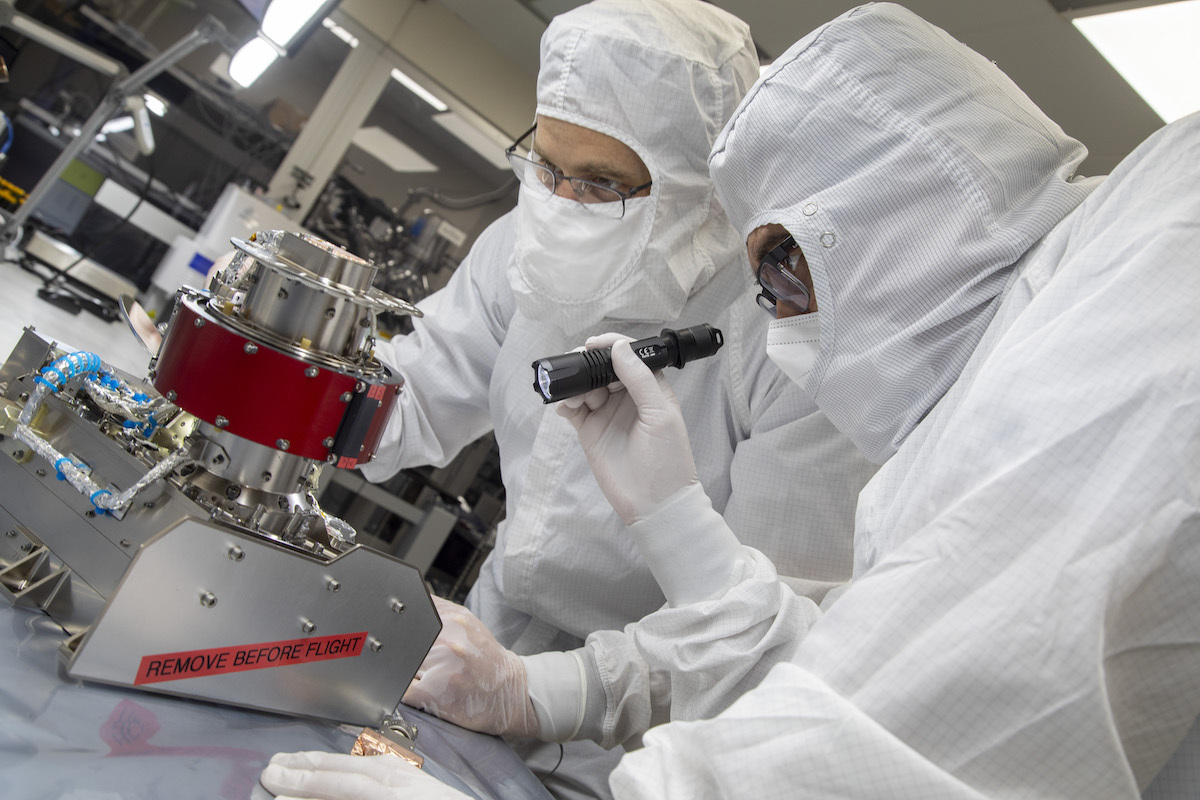12.07.2023

Southwest Research Institute has delivered a plasma spectrometer for integration into a lunar lander as part of NASA’s Lunar Vertex investigation, scheduled to commence next year. The target site is the Reiner Gamma region on the Moon’s nearside, a mysterious area known to have a local magnetic field. The SwRI-developed Magnetic Anomaly Plasma Spectrometer (MAPS) will study the interaction of the solar wind with surface materials on the Moon, aiming to understand the origin of the sinuous patterns of bright and dark soil, known as lunar swirls, that correspond with anomalous regions of magnetic rocks.
“MAPS is the latest generation of the spectrometer that originally flew on ESA’s Rosetta mission to comet 67P/Churyumov-Gerasimenko,” said SwRI’s Dr. Jörg-Micha Jahn, MAPS lead investigator. “We will investigate how the influx of the solar wind interacts with the localized magnetic fields and how it could affect features on the lunar surface. The spectrometer will help us determine if charged particles delivered by the solar wind even make it to the surface of the Moon within a magnetic anomaly.”
Unlike Earth, the Moon does not have a global magnetic field that protects it from the supersonic solar wind. As these streams of energetic particles hit the lunar surface, magnetic patches bend the trajectories of the solar particles, acting like an umbrella. The Johns Hopkins Applied Physics Laboratory (APL) is leading the Lunar Vertex investigation of Reiner Gamma to understand conditions on the Moon and other airless worlds throughout the solar system.
“MAPS represents the fastest turnaround of any space science instrument built by SwRI. It has been a remarkable effort by our staff to design, build, test and deliver a complex plasma instrument in such a short amount of time,” said SwRI’s Prachet Mokashi, MAPS project manager.
MAPS will gather sensitive, high-resolution insights that spacecraft orbiting around the Moon cannot achieve. It offers more than four times higher resolution than instruments typically orbiting around Earth or the Moon, yet it weighs only 11 pounds (five kilograms) and draws less than 6 watts of power. Just as a spectrometer separates light into its constituent wavelengths, a particle spectrometer separates particles according to their energy and direction of travel. This three-dimensional “picture” of the charged particles will reveal how the solar wind has been altered by the magnetic fields at Reiner Gamma.
“I find this project to be very rewarding personally,” Jahn said. “When you work in a field as esoteric as space plasma physics, it is nice to be able to point to something as familiar as the Moon and to know that an instrument you developed will be up there helping us to understand Earth’s closest neighbor. We are looking for clues to unravel the magnetic mysteries of the Moon and what they tell us about its formation and evolution.”
MAPS will also help scientists understand space weathering, the continuous surface erosion of objects ranging from rocky planets to moons, asteroids and comets. The space weathering process darkens the lunar soil through the combined accumulation of micrometeoroid impacts, energetic radiation bombardment, and the constant stream of particles from the solar wind. For context, the Rosetta instrument found that electrons near its target comet cause rapid breakup of water and carbon dioxide molecules released from the comet’s nucleus, not photons from the Sun, as had been believed.
“The beautiful patterns of bright and dark materials in the magnetic regions could reveal the effects of magnetism on surface weathering,” Jahn said. “Nearby regions not protected by magnetic fields serve as controls. Lunar Vertex could help us quantify space weathering and the relative roles of solar wind exposure versus the effects from cosmic dust hitting the surface. Scientists could then apply this to understand the history and evolution of airless bodies across the solar system.”
Lunar Vertex was competitively selected as NASA’s first Payloads and Research Investigations on the Surface of the Moon (PRISM) delivery. PRISM is managed by the NASA Planetary Mission Program Office under the Artemis program. PRISM solicits science investigations that will reach the Moon on commercial landers selected through the Commercial Lunar Payload Services (CLPS) initiative. NASA initiated CLPS in 2018 to spur rapid acquisition of lunar delivery services from American companies for payloads that advance capabilities for science, exploration, or commercial development of the Moon. NASA, via CLPS, selected Intuitive Machines in Houston to provide the lunar lander delivery service for Lunar Vertex. Dr. David Blewett of the Johns Hopkins Applied Physics Laboratory in Laurel, Maryland, leads Lunar Vertex.
Quelle: SwRI
